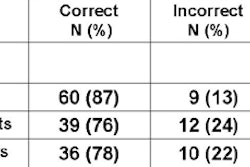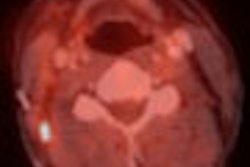ORLANDO, FL - After only a brief existence as separate entities, two new cardiovascular CT societies have combined themselves with a goal of promoting their subspecialty and increasing opportunities for training in it, particularly for cardiologists.
Members of what had been the Society of Cardiovascular Computed Tomography (SCVCT) and the Society for Cardiac Computed Tomography (SCCT) gathered this week during the American College of Cardiology (ACC) meeting and agreed to combine into a single new organization.
The new entity will be the Society of Cardiovascular Computed Tomography (SCCT), according to its new vice president, Dr. Daniel Berman, director of cardiac imaging at Cedars-Sinai Medical Center in Los Angeles.
Elected this week as the organization's first president is Dr. Stephan Achenbach of the University of Erlangen in Germany. Other newly elected officers include Dr. Michael Poon of New York City's Mount Sinai School of Medicine as president-elect, Dr. Joao Lima of Johns Hopkins University in Baltimore as secretary, and Dr. Gilbert Raff from William Beaumont Hospital in Royal Oak, MI, as treasurer.
"This society is going to be predominantly cardiologists, but there will also be radiologists and vascular surgeons involved," Berman said in an interview with AuntMinnie.com. "Now that we're together, we're going to be able to work to bring this modality to its full potential."
Multidisciplinary ideals notwithstanding, one of the society's immediate tasks will be to facilitate training for cardiology's new era, when CT angiography may well replace stress testing in the standard workup of patients with an intermediate likelihood of disease.
"In order to get to that point, we need to open up training opportunities for cardiologists around the country," Berman said. "So we will quickly post on the Web site, SCCT.org, those sites that we know are willing to train people at the present time."
Training is also critical because cardiologists are facing an effort by organized radiology, led by the American College of Radiology, to encourage limits on the provision of high-end imaging by nonradiologists.
The SCCT's view of credentialing, Berman said, "is that the people who should be doing cardiovascular CT are the people who are appropriately trained in the essentials of what it takes to perform and interpret these procedures."
"We'll have a strong educational component of the new society, and we'll be working to document what is needed in terms of issues related to accreditation of laboratories, credentialing of doctors, and of course, reimbursement, which has been way too low in this field," he added.
Time is also of the essence because the evolution in multidetector CT has made noninvasive angiographic imaging feasible for clinical use in almost any setting, likely leading to increased imaging volume.
The creation of the new society is also being welcomed by the vendor community, Berman said, "because it's likely that cardiovascular CT is going to be the principal reason that people need to shift to 64-slice scanners."
Berman also anticipates that CT will ultimately visualize the arterial plaque in a way that "may actually give, in some patients, even more information … than you can get from looking at the invasive angiogram itself."
"I'm quite certain we have a field that's on the way up," Berman concluded. "Right now, in 2005 and 2006, will be dramatic years for the development of multislice cardiac CT."
By Tracie L.
Thompson
AuntMinnie.com staff writer
March 9, 2005
Related Reading
New cardiac CT society forms, January 27, 2005
Medicare panel endorses national privileging, Stark changes, January 18, 2005
New cardiac CT society formed, January 13, 2005
ACR to pitch Congress on 'designated physician imagers' for Medicare, January 6, 2005
Copyright © 2005 AuntMinnie.com




















